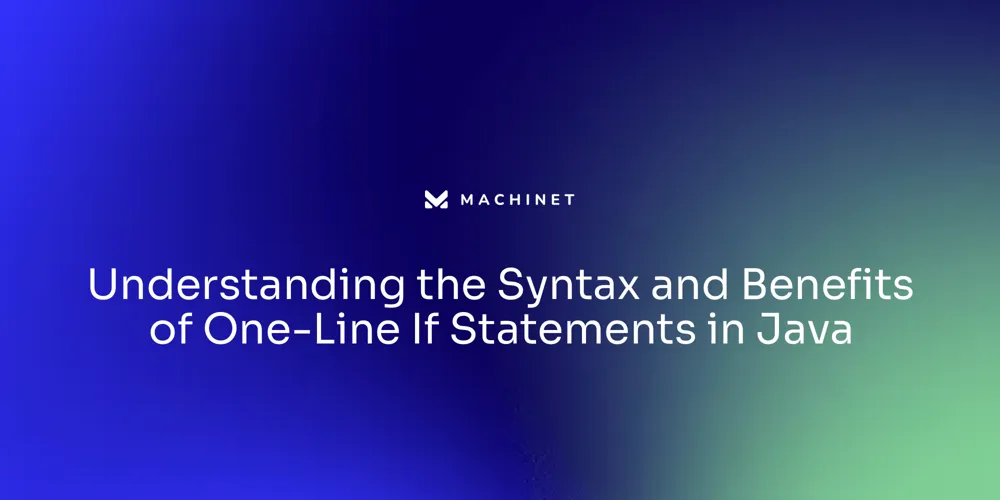
Table of Contents
- What is 'void' in Java?
- Why Use 'void' in Java Methods?
- Examples of 'void' Methods in Java
- Common Use Cases for 'void' Methods
- Best Practices for Using 'void' Methods
Introduction
The Java programming language is known for its emphasis on clean and organized coding practices. One important aspect of Java is the concept of 'void' methods, which perform actions without returning a value. These methods encapsulate specific tasks within a program, reducing complexity and ensuring focus.
Similar to the usefulness of union types in handling null and error conditions, 'void' methods simplify method signatures and contribute to code clarity. In the broader context of software development, Java's syntax and semantics have a significant impact, and practices like employing 'void' methods are essential for maintaining clean and readable code. As Java approaches its 30th anniversary, it remains a testament to both readability and adaptability, making it a vital language for collaborative and long-term project success.
What is 'void' in Java?
The Java programming language, synonymous with clean and organized coding practices, emphasizes the principle of methods having single, well-defined responsibilities. This aligns with the concept of 'void' methods—functions that perform actions without returning a value. Just like the Single Responsibility Principle (SRP) suggests, these 'void' methods encapsulate specific tasks within a program, thereby reducing complexity and ensuring focus.
To draw a parallel from the article series on the Practical Type System (PTS), the simplicity and effectiveness of 'void' in Java mirrors the utility of union types which, while uncomplicated, play a crucial role in handling null and error conditions in a type system. Considering that developers invest around 70% of their time understanding code as per Scalabrino et al., readability and understandability are critical. 'Void' methods contribute to this clarity by simplifying method signatures, as they abstain from returning information, leaving less room for ambiguity.
In the broader context, the impact of Java's syntax and semantics on software development is significant. As Java approaches its 30th anniversary, it retains its youthful spirit through continuous enhancements. Having seen the evolution from a simple language known as 'Oak' to its sprawling reach across various technology platforms, Java remains a testament to both readability and adaptability.
Embracing practices like employing 'void' methods is just one of the ways software developers can maintain clean, readable Java code—an essential factor for collaborative and long-term project success.
Why Use 'void' in Java Methods?
Utilizing a 'void' keyword in Java methods signals that the method does not return any value. It's an essential aspect of writing clean, maintainable Java code. A 'void' method might perform a task such as updating the number of slots in a parking lot object, adhering to the Single Responsibility Principle (SRP).
It allows developers to craft code that is easy to understand and modify, essential for tasks like managing a parking lot system's state. As expressed by software craftsmanship advocates, clean code composed of well-named, single-purpose methods enhances long-term project sustainability. In a practical example, a method named updateSlotAvailability that uses 'void' tells fellow developers it alters the internal status without needing to track a return value, strengthening code clarity and ease of maintenance.
Examples of 'void' Methods in Java
Within a Java class, defining methods that conduct certain actions without returning a value is a fundamental aspect of programming. These methods are declared with the 'void' keyword as their return type. Consider designing an application for a parking lot system: one might craft a 'void' method to assign vehicles to parking slots.
This method could accept parameters like the vehicle type and the parking slot ID, and internally update the system's state to reflect the parked vehicle - all without needing to return a result.
Delving deeper into method syntax, it's essential to comprehend the various components that define a Java method’s behavior and accessibility. The access specifier signals who can call the method while the method name, following Java’s naming conventions, indicates the action the method will execute. Crucially, if a method completes its task internally without needing to supply data back to the caller, 'void' is used in place of a specific return type.
This 'void' concept is not just an abstract idea but demonstrates Java's practical flexibility, employed in a variety of scenarios from simple scripts to intricate enterprise applications. As Java matures, nearing its 30th anniversary, it retains its vitality by adapting and evolving without losing the core simplicity that makes it approachable: methods that execute tasks, some returning values, others simply working behind the scenes, labeled by 'void'. Java remains a testament to software development's dual nature as art and science, balancing functionality with methodical structure.
Each 'void' method is a small, but crucial, subroutine within this grand, finely engineered ecosystem.

Common Use Cases for 'void' Methods
In Java development, void methods serve as a critical tool for executing code that does not return a value, significantly streamlining specific tasks and contributing to clean, maintainable code. For example, in building an application for a parking management system, one might define a void method to update the parking status, taking only the necessary parameters, like vehicle ID, and reflecting the changes in the database without any return.
Similarly, void methods are invaluable when crafting user interfaces. Whether you're delivering status updates, error messages, or simple acknowledgments, they allow for direct communication to the user, ensuring smooth interactions without the overhead of unnecessary returned data.
Moreover, adhering to Java best practices, such as the Single Responsibility Principle, can be achieved through concise void methods that handle a single aspect of system functionality—be it displaying a custom message or processing user input. This specialized approach aligns with the broader philosophy of crafting clean Java code, ensuring the codebase remains robust, understandable, and efficient.
In this landscape where Java remains a cornerstone of big tech and software development, void methods embody the art of simplicity, allowing developers to encapsulate necessary actions in a format that's optimized for both current functionality and future adaptability. As echoed by experts, writing code that is both effective and elegant is a balancing act, and void methods in Java are there to help tip the scales towards excellence.
Best Practices for Using 'void' Methods
To enhance the clarity and effectiveness of your Java code, it's crucial to pay attention to the method naming conventions. Clear and intentional method names are pivotal because they convey the method's function at a glance. For instance, rather than using ambiguous acronyms, opt for full descriptive names that communicate the method's intent unambiguously.
Within the suite of best practices for writing maintainable Java code, methods serve as a foundational element, encapsulating discrete operations that facilitate breaking down complex tasks into manageable chunks.
Following the Single Responsibility Principle ensures that each method addresses a unique aspect of the program, avoiding the pitfalls of convoluted and sprawling code. Michael Feathers, an authority on clean code, stresses that code should reflect the diligence and care of its author, while Robert C. Martin advocates for expressive and succinct code that eschews redundancy in favor of simplicity and abstraction from the outset.
In the world of Java development, integrating these methods within well-structured classes or objects promotes reusability and simplifies code maintenance. However, overuse of 'void' methods can lead to a scattered codebase. It's advisable to partition the logic into smaller, focused methods that carry out specific tasks, ensuring the longevity and coherence of your Java projects.
Conclusion
To sum up, 'void' methods in Java are crucial for clean and organized code. They encapsulate tasks, reducing complexity and ensuring focus, aligning with clean code principles. By simplifying method signatures, 'void' methods enhance code clarity and readability.
In software development, readability and understandability are critical, and 'void' methods contribute by making code easier to comprehend. Java's syntax and semantics have a significant impact, and as it approaches its 30th anniversary, its adaptability and readability remain vital.
Using 'void' in Java methods indicates that a method doesn't return a value, making it valuable for clean and maintainable code. It allows for easy understanding and modification, improving project sustainability.
Defining 'void' methods is fundamental in programming, ranging from simple scripts to complex enterprise applications. This practical flexibility showcases Java's simplicity and adaptability.
Common use cases for 'void' methods include updating system states and communicating with users. Adhering to best practices, like the Single Responsibility Principle, ensures a robust and efficient codebase.
To enhance code clarity and effectiveness, follow best practices. Clear and intentional method naming, along with adhering to the Single Responsibility Principle, promotes concise and manageable code. Integrating 'void' methods within well-structured classes improves reusability and simplifies code maintenance.
In summary, 'void' methods are essential in Java programming. They simplify code, enhance readability, and contribute to clean and maintainable practices. By employing these methods and adhering to best practices, developers can create effective and elegant Java code that balances functionality with simplicity.
AI agent for developers
Boost your productivity with Mate. Easily connect your project, generate code, and debug smarter - all powered by AI.
Do you want to solve problems like this faster? Download Mate for free now.




